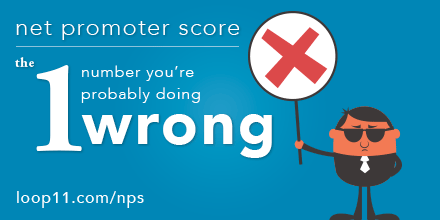Vitaly Friedman is the Founder and Editor-in-Chief of Smashing Magazine, an online magazine for professional web designers and developers.
 What direction will UX go in the next 5 years? Will it fragment into different areas or stay as is?
What direction will UX go in the next 5 years? Will it fragment into different areas or stay as is?
It’s a very good question. I feel that we see a lot of diversification right now. At this point today, it’s not enough to be good—many sites and apps out there are good. You have to be great, and it means diving deeper into psychology, the magic of delight, and potentially gamification.
What is the best way to bring a mobile first mindset to responsive design? A lot of designers I know just make a desktop site responsive for mobile.
It’s always a good idea to work in small iterations and steps. We never run big-bang redesigns; it’s always very incremental. Start small, look at the mobile experience, fork it, improve it, and try to grow it towards tablet experiences, and see how it goes. As for mindset, what really helps is to talk about priorities first. We still tend to design desktop and tablet first, but prototype mobile first. It’s simpler this way.
Smashing Mag covers a variety of different topics, from UX, to web design, development, WordPress, and more. How did you build something that’s so broad, but such an authority in all of these topics? Did you start with one?
Well, it was a development that was partly shaped by our strict editorial direction, but partly shaped by our readers. We started with a very general, broad topic of web design, and then started exploring other topics. It just evolved over time. What was important though was to keep quality above everything else. Many authors don’t like me personally because I’m scrutinizing their articles, but my job is not to be liked; my job is to publish only quality articles. You can’t compromise when it comes to your working principles.
How can designers avoid being boring with responsive layouts?
Also a very good question. The answer is actually quite simple: think outside the box. Ignore Twitter Bootstrap’s grid; ignore looking at other sites for inspiration. Listen to your clients, and turn the keywords that keep popping up in the conversations in visual hooks by translating them into something tangible on paper, and in visual comps. Look around you, and pay attention to random things; try to use them as a starting point. Stefan Sagmeister always looks around himself, at a wallpaper, carpet, packaging—anything, writes down ideas, and then gives them time to grow. And then he comes back to these ideas later and synthesizes them. Notice that looking at other people’s work isn’t a part of the process. That’s how you avoid being generic. It’s about ideation.
How is UX performed at Smashing Mag? How often do you perform usability testing on your site?
Every now and again we run usability tests and interviews to get some feedback about where we are; it’s quite informal, and sometimes we use UsabilityTesting to run them. That’s how we validate design ideas and decisions.
What’s one thing designers are getting right with responsive design? What’s one thing they are getting wrong?
Getting right: keeping interfaces clean and simple. That’s what usually is getting done quite well. Getting wrong: oversimplifying things, delivering inconsistent experiences to mobile and desktop users. Content parity matters. All content and functionality are expected to be accessible everywhere; not work and look the same way but be accessible. As designers, we have to respect it.
With responsive design being such a pressing topic, should designers be improving their development skills or stay as designers and allow developers do their magic?
To be honest, the conversation about designers having to learn how to code and developers having to learn how to design is often one-sided. The truth is that we all are quite busy, and learning an entirely new set of skills is often just unmanageable. I think it’s important to have a good overview of things; knowing things well enough to understand what certain things mean. You don’t need to know everything about everything. But a good big picture is important—especially with web design being so diverse today.
In regards to avoid boring designs, do you have any ideas about how to get leadership buy-in on your answer? I find that some of my leadership does not see the value in listening to users, doing usability testing, early research, or even the idea that the design process can’t be rushed.
I always try to argue with data. I can’t think of a concrete example of a “non-generic” design performing better in a test again a “generic” design, What does help, however, is to record a video of a user using an interface or just bring the manager into a usability room to observe users. That’s really eye-opening. And usability research doesn’t have to be expensive. We tend to run guerrilla usability testing in Starbucks, by observing users and recording a video of them using an interface.
As someone who is surrounded by an insane amount of useful content all the time, how do you prioritize what things you want to read or learn about?
I feel that important things have a tendency to pop up in newsletters and the Twitter stream every now and again. They just keep floating on the surface if you know what I mean. Every Friday I dedicate 2–3 hours reading through what happened over the last week. Web Platform Daily and our Web Development Reading List on SmashingMag are very helpful for this. I tend to select a few topics that interest me and stick to them. To be honest, I never follow the PHP/Ruby community, but I closely follow what is happening in UX/Front-end, because that’s where my heart lies.
What do you think of the recent Youtube mobile app redesign? For example, moving from a hamburger menu to a tab system (to prioritize) is good. But what about their new Apple TV app for example that doesn’t include comments, etc. Should we “really” have everything everywhere or sometimes like in this case we should only push what is the best for the specific platform?
Well, we should distinguish in our UIs between the obvious, the easy, and the possible (Jason Fried). That’s where prioritization matters. We always consider features and pieces of content in terms of priorities, group content and put them in these groups. The obvious should never be hidden; that’s why I think that showing tabs instead of hamburger icon is a good idea. The other things should be accessible, not obtrusive but accessible. Yes, I would try to have everything everywhere unless the context demands for a unique, different solution (e.g. online banking).
What’s your experience with remote unmoderated testing?
Well, it’s cheap and can bring good feedback. But if we can, we always prefer testing on actual devices. In general, I would always prefer remote unmoderated testing than no testing at all. It’s an entirely different dimension of usability testing.
Smashing seems to have done a great job at staying away from Clickbait articles and titles. Do you all do some sort of A/B testing on your article titles, or is it more of a content lead process?
No, we follow only our editorial guidance and direction. We don’t test titles at all.
I just came across from speaking with some Apple people who say that they barely do any UX research, just prototyping. What’s your take on it.
Well, it depends on the culture within the company. You have to trust your vision, but I feel that you have to validate your design decisions as well. The tricky part is (I guess) to find a balance between the two.
What’s your favorite article on Smashing Mag, and why?
Oh a very tough question. There are so many! To be honest, I try to make sure that every single article we publish is the one I love most. We have had this principle from day one, the best articles always get published first. It’s still true today. I really respect each of those articles.
What are the sites or apps with great UX that you like? And, why?
I really like Slack, but also love Stripe and Simple.com. I do like the new design of Ryanair as well and gov.uk. So well done. Simple and concise. (The performance of the Ryanair website is plain horrible though).
Can we have a glance at next steps for Smashing Mag?
Well, we are all focused on quality content in its different forms. That’s where conferences and workshop and training/consultancy come into place; the same goes for books and eBooks. As for magazine, we are thinking about a redesign at the moment and we have a few ideas: not only front-end side (Flexbox,HTTP/2 etc.), but also UX-wise. We’ll be 10 years old next September, so we better prepare something interesting and unusual—but I won’t share anything just yet.
Recently CLI-based apps are on the roll. Also being touted as the new interface to be on mobile screens. While it simplifies the UI, especially in such limited real estate, it also expects massive user behavior change–users are now expected to remember the commands. Slackbot and Telegram’s bot are such examples. Your thoughts?
Bots are interesting. I haven’t been working on one just yet, but I’m very curious to see how they will change the interfaces and the way we interact with them. Can’t say anything specific just yet, but I do think that they have a potential for truly clever and delightful experiences.
It seems like Medium has eaten up a lot of middle space between expert content (published by sites like yours) and amateur content (or personal blogs). Has Medium as a content aggregate changed or sharpened your focus at SmashingMag?
I fully agree with you, I feel exactly the same way. Yes, I would say that Medium has made it more difficult for us to convince authors to publish on SmashingMag—they can do it on Medium and get the large audience this way. It hasn’t changed our focus though; I wouldn’t say it changed anything in terms of topics/editorial work we do on SmashingMag. But: it helped massively—because it’s so much easier now to find authors. Everybody publishes these days, and shares insights and knowledge. That’s a great thing. I am all for publishing great content—doesn’t have to be on Smashing Magazine obviously!
What do you think of livestreaming as a medium? And do you see it having a role in Smashing Mag in the future?
Well, we haven’t done livestreaming, but I’d love to experiment with it. I must admit that we feel extremely busy most of the time. We have a small, humble team (and I love to keep it small!), and we are very multi-disciplinary team; so I’m taking care of events, articles, newsletters, consulting, workshops and more, Cosima is taking care of articles and eBooks, Cat of events and newsletters, Markus of business and events and publishing and print layouts. We just don’t have time to do something entirely different sometimes, but I hope we can change it in the future.
- Introducing Loop11’s Tester Panel - March 24, 2020
- Our Response to the Coronavirus - March 17, 2020
- Release Notes: 5 Second & First Click Tests, Image Testing& More… - October 17, 2018
![]() Give feedback about this article
Give feedback about this article
Were sorry to hear about that, give us a chance to improve.
Error: Contact form not found.




